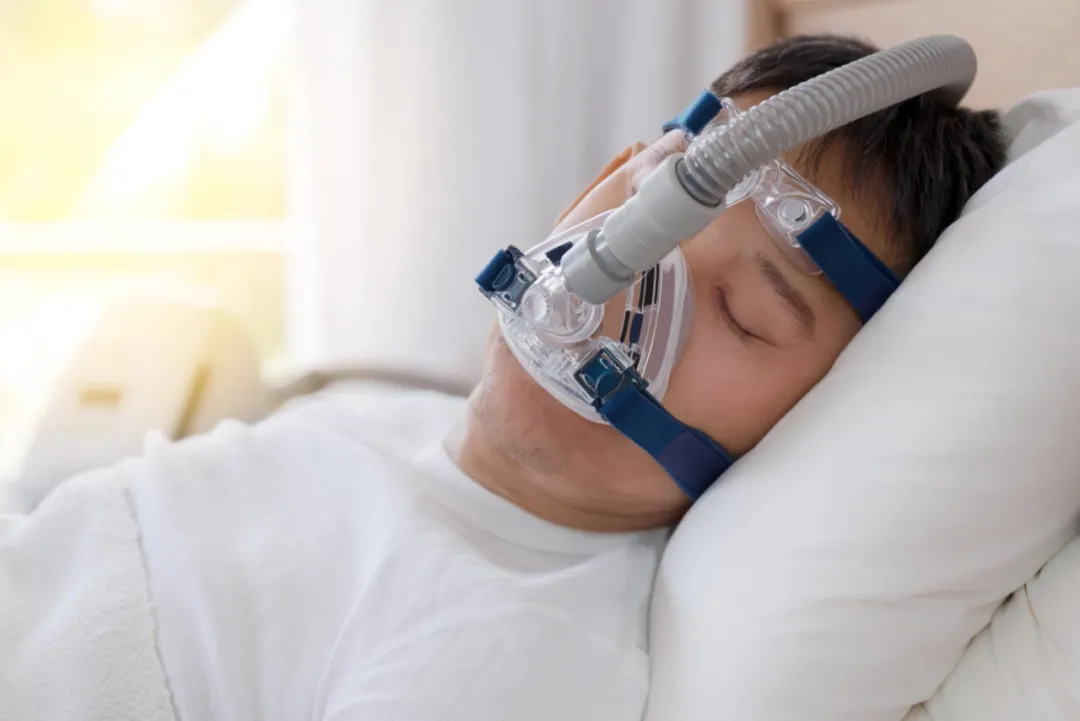source: 2025-11-12 14:24:42 Secondary reading
At night, the sound of your bed partner’s snoring fluctuates in volume, sometimes even stopping abruptly…
Seconds, even dozens of seconds pass, until a sharp inhale or a sudden resurgence of snoring breaks the silence.
This cycle repeats throughout the night.
Yet, in the show Back to Field, a different bedtime scene unfolds.
After a busy day, Mr. Huang lies down and very naturally takes out his CPAP machine and starts putting it on.
Mr. He, watching curiously beside him, can’t help but remark:
“It sounds intimidating, but it feels kind of high-tech—almost cool.”
Image source: Back to Field (Season 8), will remove if infringed.
From “scary” to “high-tech” and “cool,”
this perhaps captures the shift in many people’s understanding of sleep health.
01
Snoring Isn’t Just Noise—
It’s the Body’s Nighttime Alarm
Many assume snoring means “sleeping soundly,” but in reality, it’s an alarm sounded by the vibration of soft tissues as air struggles to pass through a narrowed airway.
Think of the airway as a respiratory “highway” that narrows during sleep.
When awake, throat muscles remain tense, keeping the airway open.
After falling asleep, muscles throughout the body (including the throat) relax, making this “road” more prone to narrowing.
Factors like enlarged tonsils, a thick tongue or enlarged tongue base, a recessed jaw, aging, or weight gain can further narrow this “road.” As air passes through, it strikes the relaxed pharyngeal tissues, producing snoring.
When the muscles relax to a certain point, the airway can collapse completely, blocking airflow entirely—this is sleep apnea.
The body falls into a state of oxygen deprivation, forcing the brain into a “micro-arousal,” abruptly tightening the muscles to reopen the airway. Breathing resumes with that loud gasp or snore.
After a whole night of cycling through “sleeping – choking – startling awake – sleeping again,” the body fails to get genuine rest.
So the next day, even after eight hours of sleep, you may still:
Feel as exhausted as if you hadn’t slept at all;
Experience brain fog and difficulty concentrating;
Find yourself irritable and quick to anger…
The CPAP machine was born to change this very sleep dilemma.
02
From “Scary” to “High-Tech”—
We’ve Misunderstood CPAP for Too Long
Mention “CPAP machine,” and many people instantly think of ICU emergency scenarios in hospitals.
This association is natural, but it has led to a long-standing misunderstanding.
We’ve grown accustomed to using smartwatches to monitor heart rate and glucose meters to track blood sugar, yet we shut out this intelligent device that can safeguard a full night’s rest.
Before passing judgment, let’s first understand how a CPAP machine works.
While you’re deep in sleep, the throat muscles relax and collapse, threatening to cut off breathing. At this moment, the CPAP machine delivers a gentle, continuous stream of positive air pressure through a comfortable mask, creating an “air stent” for the airway. This physically keeps the airway open and unobstructed throughout the night.
In this way, airflow moves freely, the root cause of snoring is eliminated, and dangerous apnea events are resolved.
Waking up to a long-lost mental clarity and full energy is more refreshing and lasting than any cup of coffee.
Moreover, the benefits of CPAP extend beyond improving sleep:
As a non-invasive treatment, it suits patients with sleep apnea of all severity levels, especially moderate to severe cases.
It prevents damage to the cardiovascular and cerebrovascular systems from nocturnal hypoxia, helping to stabilize blood pressure and heart rate.
It aids in improving complications like hypertension and diabetes that are difficult to control with medication alone.
Sleep apnea syndrome is a significant independent risk factor for stroke; improving apnea means reducing the risk of stroke.
The “high-tech” Mr. He referred to isn’t just about the appearance—it’s also recognition of its ability to precisely solve health challenges. This is indeed a scientific bedtime ritual.

03
Embracing “Cool” Sleep
Is a Mark of Life Wisdom
Mr. Huang’s openness in front of the camera may help many facing similar sleep issues realize:
Taking proactive steps to manage sleep health is nothing to be ashamed of. On the contrary, it’s a really cool life attitude that shows responsibility toward oneself and one’s family.
√ It’s an act of self-care: Listening to the body’s distress signals and responding scientifically is one of the best investments in health.
√ It’s a gesture of consideration for loved ones: When snoring stops and turns into even breathing, what you gain isn’t just better sleep, but also a peaceful night for your partner.
√ It’s an upgrade in quality of life: Viewing the CPAP machine as a “black technology” that enhances life quality, the energy and health it brings are priceless.
TreeENT Health
At TreeENT Health (Renshu ENT), we pay close attention to sleep health, fully considering each patient’s health needs and concerns. We provide a professional and standardized CPAP titration process, combining physicians’ expert evaluations with patients’ actual sleep conditions for personalized fitting.
We select internationally advanced CPAP brands, offering them at the same price as identical genuine products on the market. Additionally, we provide equipment maintenance and follow-up services for up to three years, ensuring you can use your home CPAP machine correctly, effectively, and safely.
Let peaceful sleep become a new trend.
The truly “Back to Field” life—the life we yearn for—might just be this:
Bidding farewell to nighttime anxiety and daytime exhaustion.
After every restful night’s sleep,
Welcoming a brand-new day filled with energy and bright spirits.
Choosing to protect sleep with wisdom—
That in itself is a pretty cool, composed life wisdom.